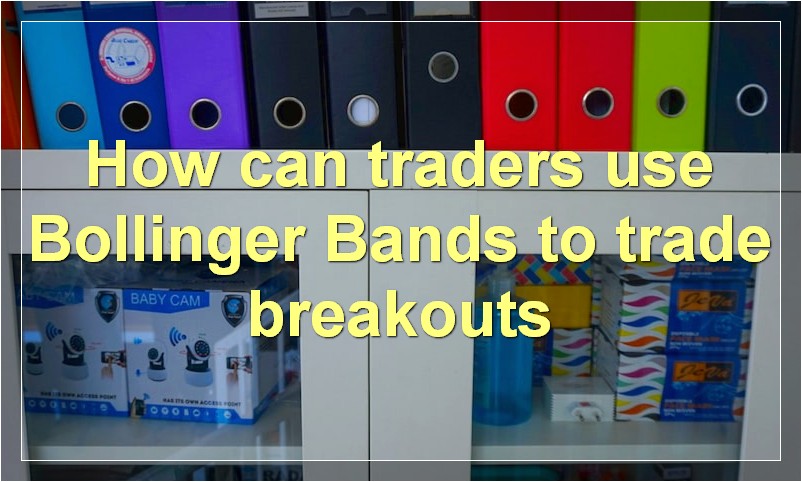If you’re looking for a reliable indicator to help you make better investment decisions, look no further than the Bollinger BandWidth indicator.
What is the Bollinger Band Width Indicator
The Bollinger Band Width Indicator is a technical analysis tool that measures the width of the Bollinger Bands. This can be used to identify periods of low volatility and potential trend reversals. The Bollinger Band Width Indicator is created by taking the difference between the upper and lower Bollinger Bands and dividing it by the middle Bollinger Band.
The Bollinger Band Width Indicator is a valuable tool for traders to use in order to measure market volatility and potential trend reversals. This indicator can help traders make more informed decisions about when to enter and exit trades.
How is Bollinger Band Width used to gauge market volatility

The Bollinger Band Width is used to measure market volatility. It is a tool that technical analysts use to determine whether a market is overbought or oversold. The Bollinger Band Width is calculated by subtracting the upper Bollinger Band from the lower Bollinger Band. A market is considered overbought when the Bollinger Band Width is less than 2 standard deviations below the 20-day simple moving average. A market is considered oversold when the Bollinger Band Width is more than 2 standard deviations above the 20-day simple moving average.
The Bollinger Band Width can be used to gauge market volatility because it takes into account the price of a security relative to its moving average. When the Bollinger Band Width is wide, it means that the security’s price is fluctuating more than usual and this increased volatility can be used to make trading decisions. For example, if a security is overbought, it may be a good time to sell, and if a security is oversold, it may be a good time to buy.
What is the relationship between Bollinger Bands and standard deviation
Bollinger Bands are a technical indicator that is used to measure market volatility. The indicator is comprised of three bands: an upper band, a lower band, and a middle band. The middle band is simply a moving average of the security’s price, and the upper and lower bands are placed two standard deviations above and below the middle band. Bollinger Bands can be used to trade a variety of different markets, including stocks, futures, and foreign exchange.
The relationship between Bollinger Bands and standard deviation is that Bollinger Bands use standard deviation to calculate the width of the bands. The reason for this is that standard deviation is a measure of market volatility, which is what Bollinger Bands are designed to measure. When market volatility is low, the bands will be close together, and when market volatility is high, the bands will be far apart.
How can Bollinger BandWidth be used to identify potential turning points in the market
Bollinger BandWidth is a technical indicator that can be used to identify potential turning points in the market. It is based on the width of the Bollinger Bands, which are a set of bands that are plotted around a moving average. When the width of the Bollinger Bands decreases, it is an indication that the market is becoming more volatile and may be about to turn.
Why do Bollinger Bands expand when volatility increases
Bollinger Bands are a technical indicator that is used to measure market volatility. The bands are created by calculating the standard deviation of the stock price over a certain period of time, typically 20 days. The upper and lower Bollinger Bands are then placed two standard deviations above and below the stock’s moving average. When market volatility increases, the Bollinger Bands expand; when market volatility decreases, the Bollinger Bands contract.
The reason why Bollinger Bands expand when volatility increases is because there is a greater chance that the stock price will move outside of the bands. This is due to the increased uncertainty in the market and the larger range of potential prices that the stock could move to. As such, Bollinger Bands can be used as a measure of market risk. When the markets are more volatile, investors should be aware that there is a greater chance of losses.
How can traders use Bollinger Bands to trade breakouts

Bollinger Bands are a popular technical indicator that traders use to identify potential trading opportunities. The indicator is comprised of three bands: an upper band, a lower band, and a middle band. The middle band is simply a moving average of the security’s price, and the upper and lower bands are typically set two standard deviations above and below the middle band.
One way that traders can use Bollinger Bands is to trade breakouts. A breakout occurs when the price of a security moves outside of the Bollinger Bands. This can be either a move above the upper band or a move below the lower band.
If a trader believes that a breakout is likely to occur, they may enter into a long position just before the breakout occurs. They would then exit their position once the price has moved back inside of the Bollinger Bands. Similarly, if a trader believes that a downside breakout is likely, they may enter into a short position just before the breakout occurs.
The key with trading breakouts is to make sure that you have some sort of confirmation before entering into a trade. This could be something like a candlestick pattern or an indicator signal. Without confirmation, there is always the risk that the breakout could be false and you could end up losing money on the trade.
What is the difference between Bollinger Bands and envelopes
There are several key differences between Bollinger Bands and envelopes. First, Bollinger Bands are a trend following indicator, meaning they help identify when a security is overbought or oversold and therefore likely to see a price reversal. Envelopes, on the other hand, are a momentum indicator, which means they can be used to identify whether a security is gaining or losing momentum. Second, Bollinger Bands use standard deviation to calculate the width of the bands, while envelopes use a moving average. This means that Bollinger Bands will be tighter when volatility is low and wider when volatility is high, while envelopes will be relatively constant regardless of volatility. Finally, Bollinger Bands can be used to generate buy and sell signals, while envelopes are primarily used to confirm trends.
How can Bollinger Bands be used to measure overbought and oversold conditions
Bollinger Bands are a technical analysis tool that can be used to measure overbought and oversold conditions in the market.
The bands are created by plotting a simple moving average (SMA) of the security’s price and then adding and subtracting a standard deviation from that average. The result is two lines that plot above and below the SMA, creating a band.
The distance between the SMA and the upper Bollinger Band measures the volatility of the security, while the distance between the SMA and the lower Bollinger Band measures the price momentum.
When the price of a security is trading near the upper Bollinger Band, it is considered overbought, and when it is trading near the lower Bollinger Band, it is considered oversold.
What is the Squeeze play
In baseball, the squeeze play is a strategic offensive move used to score a runner from third base. The play is executed when the runner on third base breaks for home plate as the batter bunts the ball. The key to the success of the squeeze play is timing and execution. If the defense anticipates the play, they can easily thwart it.
How do I interpret Bollinger BandWidth readings
Bollinger BandWidth is a technical indicator that measures the percentage difference between the upper and lower Bollinger Bands. This indicator can be used to identify Bollinger Band Squeezes and to signal the beginning of a trend.

